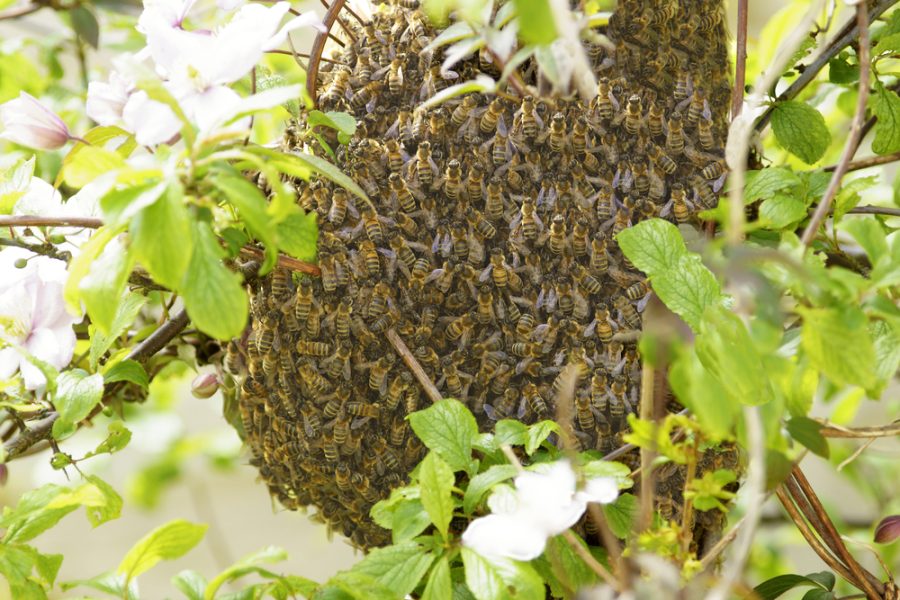The public are being warned to keep at a safe distance if they see a swarm of bees this spring, as honey bees set off, en masse, in search of a bigger home as the weather warms up.
A swarm can be extremely dramatic involving many thousands of bees in a large, noisy cloud. The queen will usually take around 75% of the hive – which can be up to 45,000 bees.
The swarm will often take a breather, settling in a cluster on a tree, before moving to a new nest site. “There is something magical about a swarm,” said Diane Drinkwater, chair of the British Beekeepers’ Association (BBKA).
“It is the colony’s means of reproduction and is triggered by a group of bees who not only slim down the queen to a flying weight, but also scope out new home possibilities and take a collective vote on it!” Nevertheless, the sight of so many bees can be quite daunting.
However, bees are usually at their most docile when swarming. This is because they are focused on the task at hand and they’ve filled their bellies with nectar to fuel them on their journey.
Bees are under threat due to intensive farming, pesticides and higher temperatures associated with climate change. To help safeguard their future, thousands of members of the BBKA become volunteer swarm collectors from now until about the end of July. When colonies are unsuccessful in finding a new home, the beekeepers move them to a more suitable location.
If the swarm takes up residence in a building, it is very difficult, if not impossible, for a beekeeper who does not have professional building skills or insurance to remove the bees. But, armed with rescue-essentials, including a straw skep or cardboard box, a smoker, sheet and secateurs, swarm collectors are able to safely remove thousands of bees at a time.
The charity, celebrating its 150th anniversary this year, runs an online, interactive swarm collection service to connect the public with local swarm collectors. Honey bees are the only bees to swarm and beekeepers are unable to help with the removal of the nests of any of the other more than 250 species of bees found in the UK which include wasps and hornets.
“On the BBKA website there are descriptions of insects which are often mistaken for honey bees,” said Diane. “But always send a photo to a swarm collector who will be able to check.” Find out more about honey bee swarms here.
More news like this can be found in The Country Smallholder magazine. Subscribe here.
For FREE updates from the world of smallholding, sign up for The Country Smallholder newsletter here.








